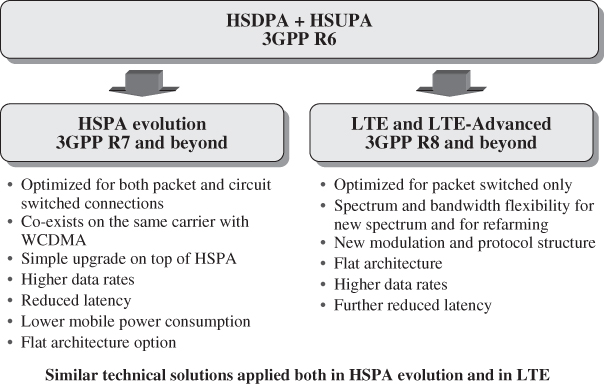Chapter 17
HSPA Evolution
17.1 Introduction
High-speed packet access (HSPA) was included in the Third Generation Partnership Project (3GPP) Releases 5 and 6 for downlink and for uplink. The 3GPP Releases 7, 8, 9 and 10 have brought a number of HSPA enhancements providing major improvements to end-user performance and to network efficiency. The work will continue further in future releases.
The HSPA evolution work has progressed in parallel to LTE work in 3GPP. HSPA evolution deployments in practice take place in parallel to LTE deployments. Many of the technical solutions in HSPA evolution and LTE are also similar. A number of 3GPP work items are common to LTE and HSPA including home base stations (femto cells), self-optimized networks and minimization of drive testing. The overview of the HSPA evolution and LTE roles is illustrated in Figure 17.1. HSPA evolution is optimized for co-existence with the WCDMA/HSPA supporting legacy Release 99 UEs on the same carrier and is designed for simple upgrading on top of HSPA. The HSPA evolution aims to improve performance for the end user by lower latency, lower power consumption and higher data rates. The features of HSPA evolution are introduced in this chapter. The HSPA evolution is also known as HSPA+.
Figure 17.1 Overview of HSPA evolution and LTE roles

HSPA evolution includes interworking ...

